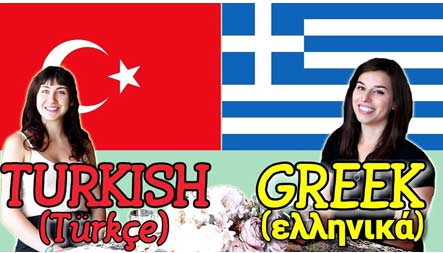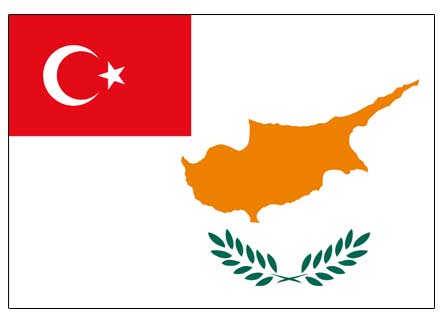
When you take your break in Cyprus and rent an apartment or rent a villa from us you will discover that Cypriots are certainly very proud of their cultural heritage. Cypriot culture does stretch back over more than 9000 yrs.

But, you'll probably notice that Cyprus now is far more concerned with the more recent events of the last 20 years than those of a thousand yrs ago!. The fun loving north of the island ( where Ayia Napa is) is very busy trying to re-creating itself in the image of Turkey, changing their names into Turkish and welcoming the lifestyle and culture of its most northern neighbouring state. This Republic is at the same time trying to create itself an independent identity, and so many places within the Republic have recently been renamed. Despite the present-day situation, Cyprus is now littered with many reminders of the island's rich culture and history. When you rent one of our villas or other holiay accomodation you will definitely discover this to be the truth. Relics can be found from every era - from Greek temples, to Roman mosaics and 15th-century frescoes - these have all influenced the artists of today. When you come and enjoy the sunshine of Cyprus be sure to take time out from your normal daily fun to visit and discover these wonderful sites. Many villages do specialise in a particular art form, and as you take in the sites all around Cyprus you'll find pottery, copperware and silver, basket weaving, tapestry and of course Lefkara's very famous lacework. This is all part of the rich culture of Cyprus and will no doubt be interesting to the whole of the family during your vacation

Like most things in Cyprus, religions are split along the Green Line. The northerners of the island are mostly Sunni Muslims, the southerners of the island are Greek Orthodox. When you come to the beautiful island of Cyprus you will find that food also reflects the culture divide that is apparent here, the facts are that: in the North there is mostly Turkish type of cuisine; in the Republic there is mainly Greek. But wherever you go in Cyprus, you'll definitely find "kleftiko" (oven-baked lamb) and the famous mezedes (salads dips, and other irrisistable appetisers). Cyprus is also well known for its fruit. During your stay at one of our beutiful romantic holiday villas or holiday apartments locally You'll find plenty of strawberries, melons, stone fruit, citrus, prickly pear and grapes.

Greek Cypriots are taught standard modern Greek (SMG) at school in Cyprus and employ this in their writing and oral communication on formal and public occasions. Turkish Cypriots use standard modern Turkish (SMT). For more informal oral exchanges in Cyprus, each of the communities employ what is known as the Cypriot dialect. Cyprus does have a high degree of literacy with much of the population being very capable of communicating in English, especially the younger generation. Until the 1970s, Turkish Cypriots could communicate well in Greek and a large number of elderly Greek Cypriots could easily understand an amount of Turkish. However, political conflict eventually resulted in linguistic barriers. As animosity increased between the communities, the act of speaking the enemy's language became unpatriotic on both sides. Now, after twenty-six years of absolute culture separation, very few Greek Cypriots can understand the Turkish language and virtually no young Turkish Cypriots can speak or understand Greek. For informal oral exchanges, each culture will utilise a different idiom, known within each side as "the Cyprus dialect." Such dialects are sometimes regarded as local, intimate, and authentic idioms vis–a–vis the two standard varieties, but in other contexts they may be seen as low, vulgar, or peasant idioms.

After Cyprus became a state in 1960, it created a flag but didn't acquire a national anthem. It's flag shows a map of the island of Cyprus in orange & yellow against a white background, symbolizing the color of copper. The island has been renowned for its copper produce since ancient times. Under this we can see a wreath of olive leaves. The symbolism of the flag draws on nature rather than culture or religion. The official recognised symbol of the 1960 Republic of Cyprus state is a dove flying with an olive branch held in its beak within a shield inscribed with the numbers 1960, set within a wreath of olive leaves symbolizing a desire for peace. Until 1963, when civil ethnic conflict broke out, a neutral piece of music would be played on official state occasions. After 1963, the two communities totally adopted the national anthems of Greece and Turkey. The flag of the Republic of Cyprus was rarely used before 1974. Greek Cypriots striving for union with Greece after 1960 used the Greek flag, while Turkish Cypriots hoping for separation of the island used the flag of Turkey. The flag of the republic became used more commonly after the 1974 separation of the island, but only by Greek Cypriots. It was used as a state symbol of the Republic of Cyprus, which in practical terms meant the Greek side. Turkish Cypriots declared their own state in 1983 under the name of the Turkish Republic of Northern Cyprus (TRNC), which has only been recognized by Turkey. In an attempt to prevent international political recognition of the Turkish Cypriot declaration of independence, Greek Cypriots started to use the official flag of the republic. In actuality though, Greek Cypriots often fly both the Greek flag and that of the republic, while Turkish Cypriots fly both their own flag and that of Turkey.

For Nissi Golen Sands and Nissi 3, contact Antony Ross
For Skaros, please contact George Atzio
+44 7737 540 170. WhatsApp.
+357 99 472 419 WhatsApp
